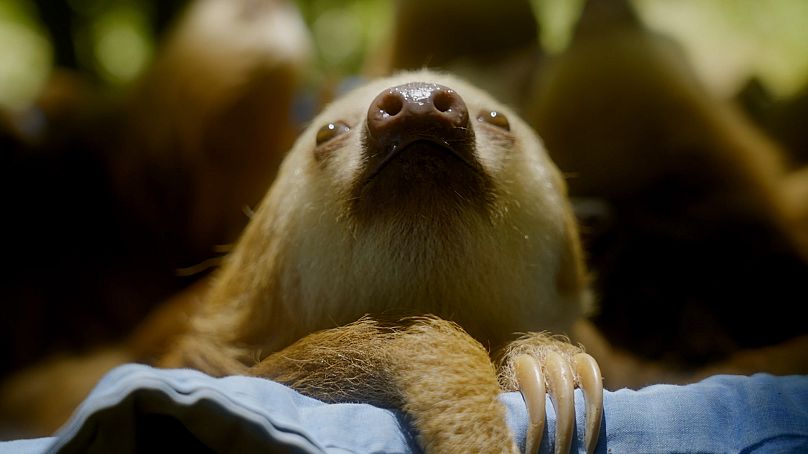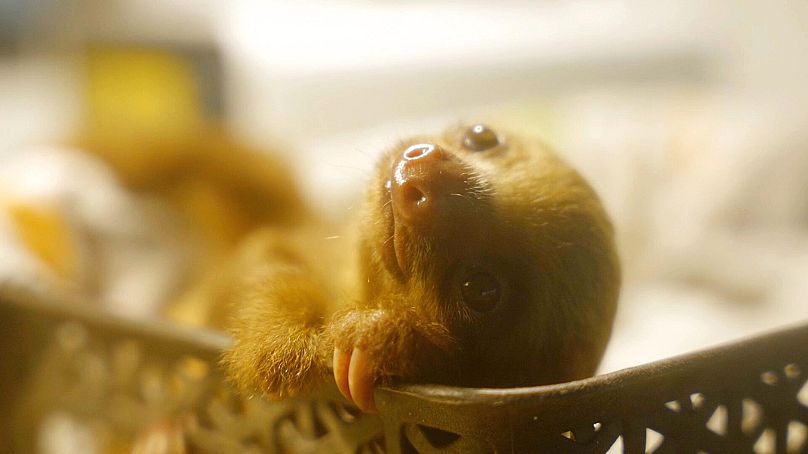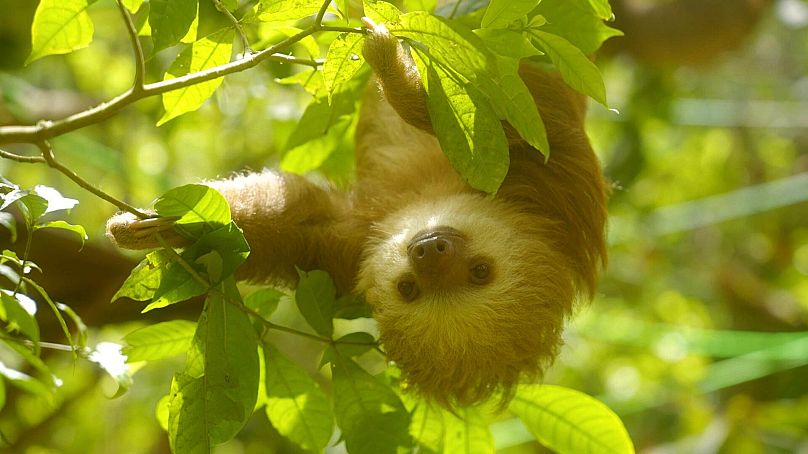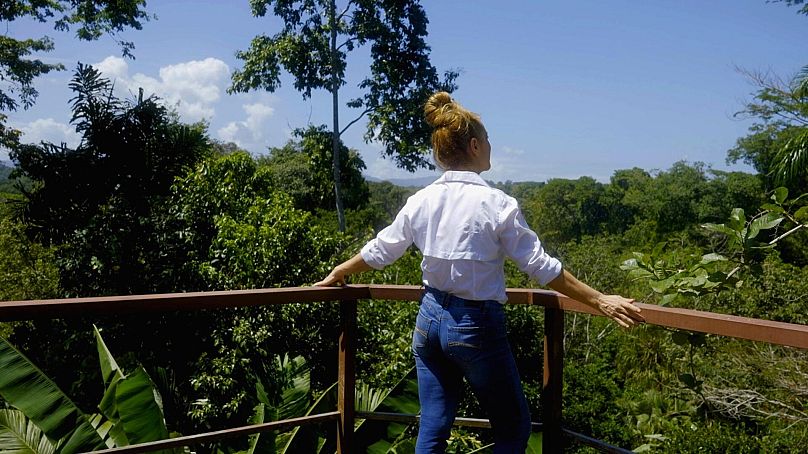There are only 1,500 sloths left in the wild. But this Costa Rican sanctuary is preparing orphaned cubs for life in the rainforest.
How do you teach a sloth to be a sloth? That’s the question facing an animal orphanage centre in Costa Rica.
Located deep within La Ceiba rainforest, the Jaguar Rescue Center (JRC) gives helpless sloths a chance to develop the necessary skills for life in the wild.
Though there’s little cuter than the sight of sloth babies peering out of a wheelbarrow, these youngsters have a tragic backstory.
Orphaned cubs are a frequent discovery in the rainforest, where many of their mothers succumb to electrocution, road traffic collisions and the teeth of wild dogs.
“It’s a constant battle,” admits Encar García, founder of the JRC rehabilitation centre in the Central American nation.
Only 1,500 sloths are still left in the wild, according to WWF, making them one of the most endangered mammals on the planet.
Life for these slow-moving creatures is troublesome, with deforestation, hunting and the destruction of their natural habitat prime reasons for their decline.
There’s no replacement for a sloth mother, who spends up to a year raising her pup. But, García says, “we invented a way these baby orphans can be released back into the forest where they belong.”
From kindergarten to graduation
Once an orphaned sloth is brought to the facility, the JRC acts quickly to introduce the animal to its new environment.
“We’ve invented a whole adaptation system for our sloths,” says García.
“Firstly, we put it with other babies of the same age and we take it through a process that we call ‘high school’, where it goes outside, starts climbing trees and uses our playground.
“Little by little, it learns to be a sloth.”
This process is matched with expert medical care and nutrition - ranging from leaves and twigs, to fresh fruit and vegetables.
A low metabolic rate means sloths can survive on relatively little food. It takes days for them to process what other animals can digest in a matter of hours.
But without guidance from their mothers, the staff at the JRC work hard to encourage cubs to eat a nutrient-rich diet.
“Learning to find their own food is one of the final stages of their education,” adds García.
“At this point we leave them on their own the whole time, and they do not have any kind of care. They have to find food by themselves.”
This process allows the sloths to reacclimatise to their natural environment.
Far removed from the helping hands of their human carers, the cubs spend their days climbing trees and eating leaves from overhanging branches. Only camera traps are present to document their movements.
“After this last process, we can see that they are wild and ready to graduate,” says García.
“When you approach them, their behaviour is totally different. They are no longer a kid, but a large animal weighing three kilos.”
Before they are released back into the wild, the sloths are microchipped so that they can be tracked on their journey. Their nails are also painted in bright colours, allowing for quick identification in the wild.
“Once they are released, we go to the Cahuita National Park and follow them,” says García.
“It’s a great feeling to see that all of the work that has been done by our entire team over three years has resulted in freedom for these wonderful animals.”
Watch the video above to find out more about the baby sloth rehabilitation centre.















